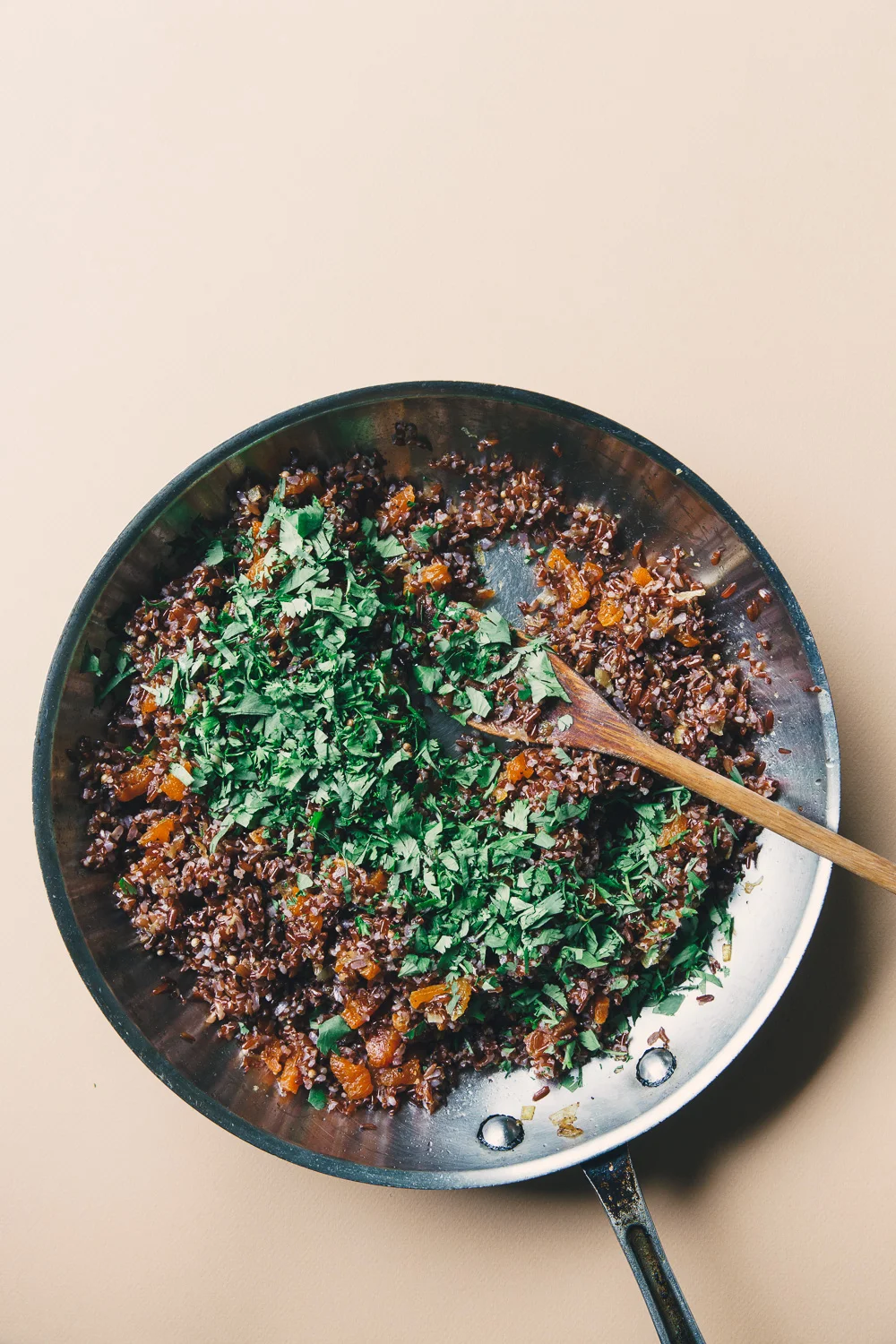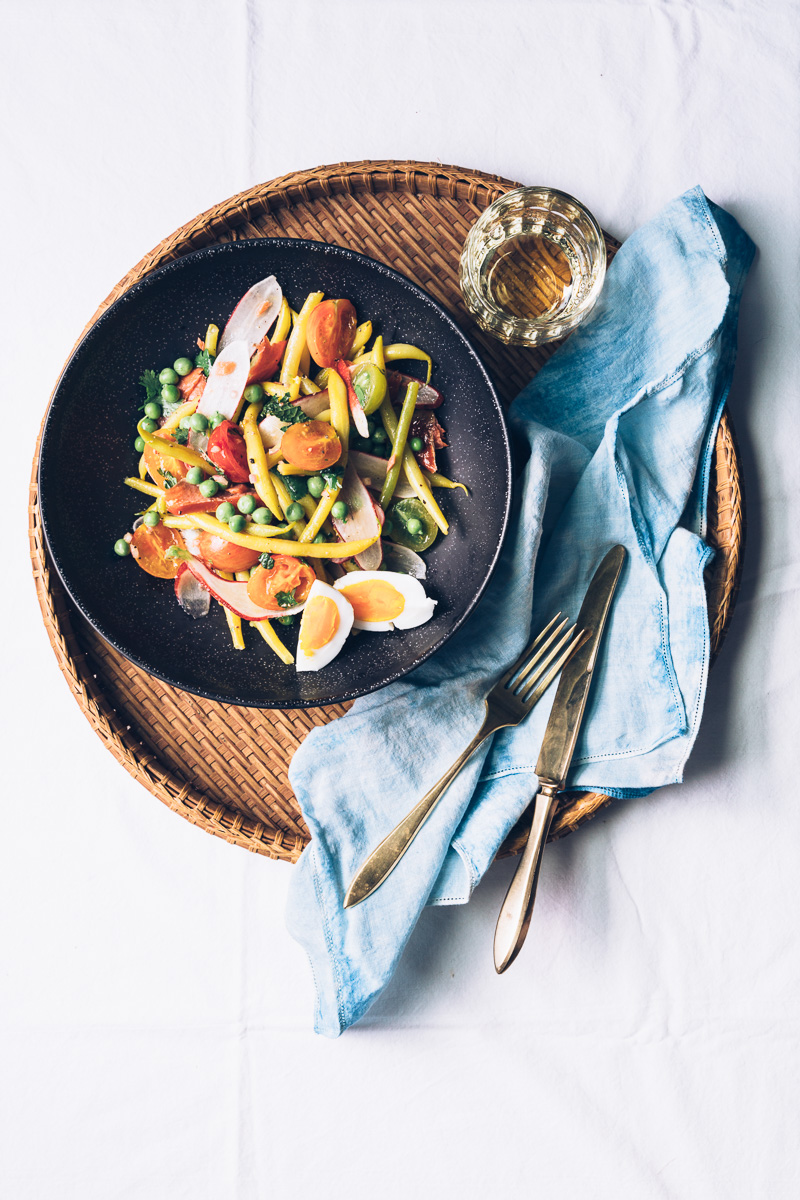Once upon a time, before Beau and I got married, I had a boyfriend who was a vegetarian. Please know that I love and cherish the vegetarians in my life. But this boyfriend was the worst sort of non-meateater. The sort of judgy vegetarian who, when we were in the early stages of our relationship, had no problem with me cooking and eating meat, then would randomly get angry about my “disgusting meat addiction”. The sort of vegetarian who, when we were out, would finish my hamburgers and slices of pepperoni pizza because it was “better than wasting”. A vegetarian who was actually more of a carb-atarian and who occasionally cooked horrible hippie food with whatever strange dregs were rolling around in the fridge (sauerkraut burritos, anyone?).
I’m embarrassed to admit that my relationship with this particular ex contaminated my feelings about vegetarians in general. For several years after we broke up, I projected his condescending sense of superiority onto all the vegetarians and vegans I met. (After we broke up, I started dating a meat-eating, Southern, ex-republican who’s job in the Special Forces saw him jumping out of helicopters on a regular basis. Needless to say, he did not complain about my “meat addiction”. Oh, what a painfully obvious rebound.)
I’m happy to report that my anti-vegetarian sentiment disappeared along with the presence of this ex in my life. Unexpectedly, my time with him left me with a deeper empathy for people who don’t eat meat. In our five years together, I saw first-hand how thoroughly vegans and vegetarians are treated as a fussy nuisance or an afterthought at holiday gatherings.
Turkey! Ham! Rack of lamb! Gravy and stuffing--made with pan juices, of course! These are the traditional stars of the holiday table. Vegetarians and vegans are left to cobble together a meal of cranberry sauce, gloppy green bean casserole, dinner rolls and perhaps a Brussels sprout or two. (Let’s not even discuss the inedible Field Roast, which is an approximation of no roast I’ve ever tasted.)
If you’re not a vegan or vegetarian yourself, you’re likely to have one or more at your holiday table. Which is why we need more holiday dishes that can accompany meat (if you go that route) and are sexy enough to keep our non-meateating friends and fam from feeling shafted.
Enter this Red Rice with Coriander, Apricot and Herbs.
I found this amazing red rice on my last trip to Paris. It’s hearty, nutty and subtly sweet, with a beautifully firm texture. (Wild rice is a great substitute if you don’t feel like tracking this down.) Whole coriander seeds and fresh lemon zest add zing. The jewel-toned dried apricots lend sweet-tart balance and keep this rice dish from looking blah. And fresh herbs because, fresh herbs on everything. Always and forever.
Because we all have shit to do at the holidays, this is super easy to make. You cook the rice using the pasta method (boil and drain) and prep everything else while it cooks. The whole thing comes together in about 30 minutes. I’m going to go ahead and say this vegan, gluten-free dish will please pretty much everyone at your holiday feast.
Which is what the holidays are all about--making everyone who gathers around your table feel welcome.
Red Rice with Coriander, Apricot and Herbs
- 1 ¼ cup Camargue Red Rice (or wild rice)
- Kosher or sea salt
- ¼ cup extra-virgin olive oil, plus more for drizzling
- 1 medium yellow onion, diced
- 1 teaspoon freshly-ground black pepper
- 2 teaspoons coriander seeds (the smaller, the better)
- ½ cup roughly chopped dried apricots
- 1 tablespoon lemon zest (from 1 small lemon)
- 1 tablespoon fresh lemon juice
- 2 tablespoons roughly chopped parsley
- ¼ cup roughly chopped cilantro
*Notes: I used red rice grown in the wetlands of southern France. You can buy the same sort of Camargue red rice here. Wild rice would also be great in this dish.
- My very favorite dried apricots are the Blenheim variety. They are more tart than Turkish Apricots. I buy mine at Trader Joe’s, but you can also get them here.
- If you want to kick the heartiness up a notch, a handful of chopped pistachios or toasted walnuts would be a great addition.
- This dish can be served warm or at room temperature. It’s good on the first day, but maybe even better the day after. (I just ate some cold, straight out of the fridge and it was pretty delicious.) If you make it in advance, I recommend reheating it, covered, in a low oven before serving.
Place the rice in a large saucepan along with a generous pinch of salt. Cover with water by 3 inches and bring to the boil. Reduce the heat to a gentle simmer and cook until the rice is done but still firm. Mine took about 25 minutes. Drain and set aside.
While the rice is cooking, heat a large sauté pan over high heat for about 1 minute. Add the oil. When the oil starts to shimmer, add the diced onion, black pepper and a generous pinch of salt. Reduce the heat to low and cook until the onion is very tender. If it browns a bit, that’s ok, but the goal is not to get it brown and crispy. You want meltingly soft onions, so keep the heat low and stir often. When the onions are soft, add the coriander seed and cook for 1 minute. Add the chopped apricot and lemon zest and cook for a minute or two more. If the rice is still cooking, turn off the heat on the onion mixture and set aside.
When the rice has been cooked and drained, add it to the pan with the onion mixture and cook over medium heat until everything is warm and the flavors have come together, 2-3 minutes. Season with the lemon juice and stir in the parsley and cilantro. Taste and add more salt, pepper, lemon or olive oil as desired. Serve warm or at room temperature.
Makes 4-6 side-dish servings
































